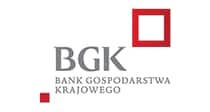| 8:30 – 9:00 | Conference Registration |
| 9:00 – 9:10 |
Prof. Joanna Plebaniak Prof. Janina Jóźwiak |
| 9:10 – 9:50 |  Keynote Presentation: Keynote Presentation:
Prof. Jonathan Crook Currently banks used credit risk models to predict the probability that a credit customer will default in a given window of time. This presentation will discuss a new and more comprehensive approach to modelling credit risk that gives predictions of the probability, for each customer, that he/she will transit from one state of delinquency to another between any two months in the life of the loan. The transitions include not only transitions into further delinquency but also transitions to lesser states of delinquency, that is cure. These types of models give much more information that the standard credit scoring model and should enable banks to compute provisions and the amount of capital for credit risk more accurately than at present. The model includes macroeconomic variables and so enable the analyst to gain predictions for different macroeconomic scenarios. The advantages of using this type of model compared to other types of credit scoring models will be described as will the methodology. Results of applying the method to a large dataset relating to credit card holders will be illustrated. |
| 9:50 – 10:20 |  Presentation: Presentation:
Adam Świrski The fundamental question that can be asked from the perspective of the practitioner is the one concerning what really BIG DATA is and why is it such a popular topic now. It is crucial to find out what is a real and potential application of BIG DATA in banking. The data analysis (data science) has a great future and it’s impact grows in significance. However we must note the traps and risk of drawing incorrect conclusions and improper analysis of large data volumes. It must be considered whether BIG DATA constitutes a competitive element for banking and whether on the basis of BIG DATA such companies can emerge that will compete with Banks e.g. loan companies. |
| 10:20 – 10:45 |  Presentation: Presentation:
Dr Aneta Ptak-Chmielewska Taking into consideration the weakness of the models based on discrimination function (Z-score) proposed by Altman within the conditions of Polish economy some attempts were taken in the 90s to adjust these models to the reality of post-communist economy. The initial interest in the models of multivariate discriminant analysis was extended by logistic regression models and then also by neural networks and decision trees. In the recent years some attempts were also taken to apply models of the event history analysis. Rating models based on developed bankruptcy risk models are basic element in credit risk management. Presentation focuses on the critical assessment of statistical methods applied and points out the advantages and disadvantages of various approaches toward the estimation of rating models. |
| 10:45 – 11:00 | Break |
| 11:00 – 11.40 |
Probabilistic forecasting of wholesale electricity prices Prof. Rafal Weron Over the last 15 years, electricity spot price forecasting has become the core process of an energy company’s planning activities at the operational level. A variety of methods and ideas have been tried, with varying degrees of success. While there have been many empirical studies on point forecasts (i.e., the ‘best guess’ or expected value of the spot price), probabilistic – i.e., interval and density – forecasts have not been investigated extensively to date. Moreover, given the diversity of models and their variable performance, it is essentially impossible to select ex ante a single, most reliable one. In this context, combining forecasts has the potential to turn out to be particularly useful. In this talk I will briefly review the electricity price forecasting literature and highlight some recent trends. Then I will present a novel method of computing prediction intervals – Quantile Regression Averaging (QRA) – which involves applying quantile regression to a pool of point forecasts of individual (i.e., not combined) forecasting models. As such, QRA can leverage existing development of the point forecasting literature and yield high quality probabilistic forecasts. I find QRA particularly attractive from a practical point of view and expect its widespread use in probabilistic forecasting, not only in the context of wholesale electricity prices but also in other areas of finance, and in risk management in particular. [1] R. Weron (2014) Electricity price forecasting: A review of the state-of-the-art with a look into the future, International Journal of Forecasting 30(4), 1030-1081 [Open access] (http://dx.doi.org/10.1016/j.ijforecast.2014.08.008 ). |
| 11:40 – 12:05 |  Presentation: Presentation:
Dr Tomasz Kaczor Various, both theoretical and empirical studies, confirm the value of so called consensus forecast, that is combining individual forecasts produced by separate forecasters to yield an aggregate forecast. The result of the process was shown to be superior to its components in terms of accuracy. The consensus forecast also doesn’t exhibit two major drawbacks any individual one might have, i.e. the necessity to choose a forecaster and being prone to individual biases of the forecaster. Yet, having plenty of advantages, consensus forecasts are not themselves a perfect tool and have their shortcoming. They may underuse privately held information, that an individual forecaster might have. Also, compiling them frequently requires certain amount of a coordinated effort. As a result they may fail to fully reflect the most recent public information and, comparing to an individual forecast, be difficult to obtain on constant basis. Finally, as creating a model to be used to deliver a forecast does consume resources (especially time), tools used to provide constituent forecasts may not themselves be up to the most recent developments in economy and data (for example due to changing over time of the forecasting power of variables). That again leads to underutilization of publicly held information. A ways to mitigate some of those detriments will be discussed. They base on mimicking ‘a market of forecasts’ and extensive use of a statistical programing language. |
| 12:05 – 12:30 |  Presentation: Presentation: Domenico Billè If you believe that your organization is not at real risk of cyber attack, then you are absolutely wrong. Incidents of massive data breaches, advanced cyber attacks coming from China, groups like Syrian Electronic Army, Hacking Point of Sale machines at retailers have splashed across the news in the last year. Whether a Government Agency or Private Company, Small or a Large Tech Company It’s no secret that No one is Immune to Cyber Attacks. Cybercriminals can attack your organization without even entering your business location and traditional crimes are more and more shifting to cyberspace. A data breach can cost your company millions of dollars to rectify and cause loss of consumer confidence. Current processes are manual, ad-hoc and reactive whereas there is a need for proactive and predictive capabilities, to identify attacks BEFORE the exfiltration of data. Using Analytics over cybersecurity and Behavioral analysis will help you think and act strategically and thanks to SAS in-memory analytics you can get near real time analytical outcomes preventing critical breaches and leaks within any Organization. |
| 12:30 – 13:15 | Lunch |
| 13:15 – 13:45 |  Presentation: Presentation:
Radosław Kita I would like to share my experiences in the use of big data techniques to create a 360-degree ;image of a bank customer, identify needs and predicting behavior. The transaction data collected in the banking system have a huge potential. I would like to tell about methods of structuring these data and basic statistical techniques that allow to transform transactional data into business knowledge. I would also tell about easy to come by data existing outside transactional systems. Data that will allow to build a fuller picture of the client's needs. One of the biggest challenges is the integration of external data with internal data. I would like to tell you how big data allows similar operations. |
| 13:45 – 14:15 |  Presentation: Presentation:
Dr Karol Przanowski The presentation is aware of the importance of certain figures that are essential to an understanding of Credit Scoring models in credit acceptance process optimization, namely if the power of discrimination measured by Gini value is increased by 5% in presented example then the profit of the process can be increased monthly by about 1.500 kPLN (300 kGBP, 500 kUSD, 350 kEUR). Simple business models of credit loans are also presented: acquisition - instalment loan (low price) and cross-sell - cash loans (high price).Scoring models are used to optimize process, to become profitable. Various acceptance strategies with different cut-offs are presented, some are profitable and some are not. Moreover, in a time of prosperity some are preferable whilst the inverse is true during a period of high risk or crisis. To optimize the process four models are employed: three risk models, to predict the probability of default and one typical propensity model to predict the probability of response. It is a simple but very important example of the Customer Lifetime Value (CLTV or CLV) model business, where risk and response models are working together to become a profitable process. One example of business model in Excel spreadsheet to tune an acceptance process by individual parameters is presented as well. |
| 14:15 – 14:45 |  Presentation: Presentation:
Łukasz Libuda Big-Data is a keyword for today’s business environment. Time is money and good business information “here and now” has still increasing business value. Analytical models are built to support many business areas and their time-to-delivery is crucial: it has to be as short as possible giving enough time for decision taking. Is high-performance analytics just a pure technology issue, new trendy fashion or a new way how to drive effective business? |
| 14:45 – 15:30 |  Panel Discussion: Panel Discussion:
Prof. Marek Gruszczyński Prof. Krzysztof Jajuga Dr Stanisław Klauza Prof. Andrzej Sławiński Adam Świrski Prof. Rafal Weron |
| 15:30 – 15:45 |  Closing Remarks: Closing Remarks:Prof. Ewa Frątczak |
| 15:45 | Networking Coffee |
presentation will be delivered |  presentation will be delivered |
Simultaneous translation will not be available.
Honorary Patronage

Conference Host
Date
20 October 2015
Conference Venue
Warsaw School of Economics
Building C
Al. Niepodległości 128
02-554 Warszawa
Partner

Sponsor

Advanced Analytics and Data Science 2014
Find content from last year’s conference

